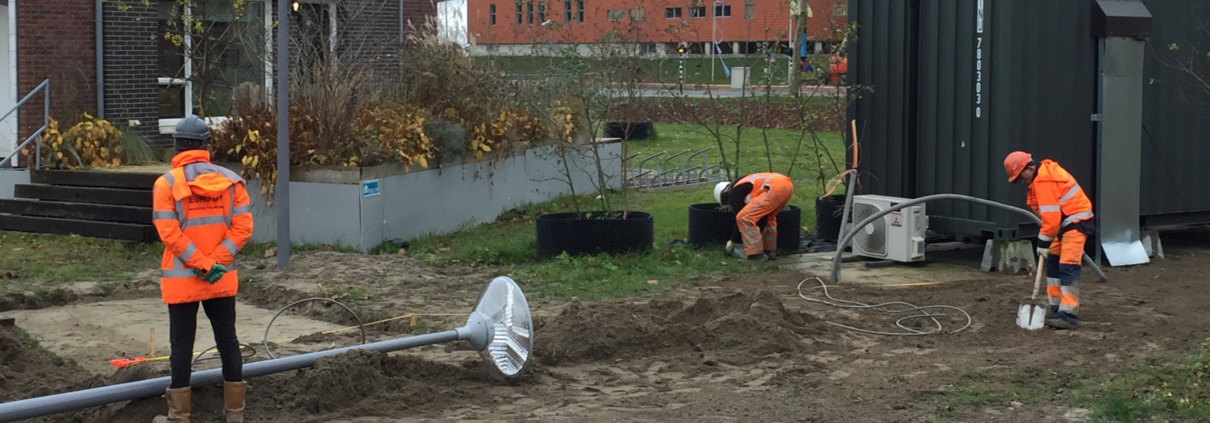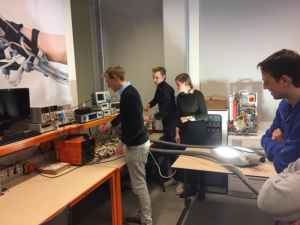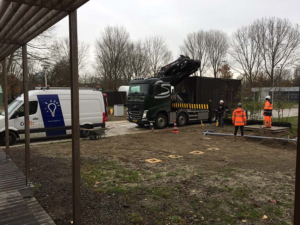Seeing is believing
The energy transition. Houses are continuously moving away from gas and we have also started driving electronically. A sustainable route, yet the demand for electricity is now five times higher than it previously was.
Besides that, 95% of all technology, such as laptops and LED-lighting, use direct current (DC), whilst the energy suppliers offer alternating current (AC). With the use of an adapter, AC is turned into DC, but loses energy and capacity. The question is how we can prevent the electricity network from overloading to the point where it cannot supply the demand any longer. Wilfred Akerboom of CityTec, a system integrator for public lighting, among other things, explains that the combikabel could offer a solution to this problem and the accompanying challenges.
The most commonly used distribution cable for electricity in the Netherlands is the ‘combikabel’: a bundle of various wires which all transport AC. This cable offers electricity to buildings, houses and lamp posts. Theoretically, a few of these wires could be used to transport DC, meaning both AC and DC run through the combikabel. When this is applied, there is less necessity for conversion from AC to DC, as the capacity and reliability of the network increases and simultaneously results in less required materials.
Project Combikabel
“But theory alone isn’t enough. At the end of the day, seeing is believing,” says Wilfred Akerboom. That’s why he searched for a place to test his combikabel in real-life back in 2018. This ended up taking place at The Green Village, a testing ground for sustainable innovations in an urban environment, a place with flexible regulations at the TU Delft Campus. Together with students from the Haagse Hogeschool, he worked on project combikabel, supported by Stedin and the municipalities of Albrandswaard and Rotterdam. This project showed that AC and DC can safely travel through a combikabel simultaneously.
“In the current situation the network is only utilised by 20%, making it possible for the providers to guarantee a good functioning network. During the testing at The Green Village, Wilfred and his team discovered something important. Besides proving that AC and DC can safely travel through the combikabel together, it’s also possible to fully utilise the AC-network to 100%, without causing black-outs with the DC lighting. Unfortunately, this discovery isn’t enough, as challenges in real-life could arise outside of the technical environment.
“Seeing is believing, that’s why testing grounds such as at The Green Village are so important.” – Wilfred Akerboom
Security over Innovation
There are many different bottlenecks that need to be solved. One of these bottlenecks is related to laws and regulations. According to the current NEN-1010 norm, AC and DC aren’t permitted to flow through a cable simultaneously.
“With this project we want to demonstrate that with the help of a specially created test case, it can be safe to combine AC and DC, even when there are faults in the cable. The NEN-1010 norm therefore needs to be adjusted.”
“A second bottleneck is that power providers want security, which is understandable. They cannot afford trying something new and ending up with a whole neighbourhood without power”, Wilfred explains.
“Due to the increasing demand for electricity, power providers need to make changes to the electricity network. An appealing solution would be to lay more cables in the ground, as this has worked in the past. Working with AC and DC in a combikabel, requires the mechanics to work differently to the way they are used to.”
At the same time, there are municipalities with their own networks. This means these municipalities are responsible for their networks and working towards sustainable changes when they encounter similar challenges. These municipalities have shown that DC and street lighting go well together, there are over 50% less cable losses (5% energy savings), there are at least 50% less cabins on the streets and 75% savings in copper.
What makes the situation even more complex is that in the case of a combikabel, the power provider is responsible for what happens under the ground, while the municipality is responsible for everything above the ground, such as lighting. To take the next step, these two parties will have to work together.
Yet this doesn’t have to be too complicated. “If for example a municipality repairs their sewerage, that presents the perfect opportunity to look at the combikabels and to see if they are fit for DC. These cables have been in the ground for 40 to 50 years, but are often technically still in working order. When the cables are still in good condition, these don’t need to be replaced, which saves material use. If the cables aren’t in good condition, they can often be repaired or partially replaced, which also saves in costs and material.
Flex DC for motorways
At CityTec, Wilfred and the DC Team are busy preparing for a new collaborative project at The Green Village with DC Opportunities, TU Delft and Stichting Gelijkspanning, called Flex DC. Within this project, they will flow electricity from two sides, meaning electricity can be transported up to ten times as much. A first step in this project is motorway lighting with LED lights, which can work on DC and AC. These lights are placed on the Co-Creation Centre.
For Wilfred it made sense to execute this new project at The Green Village again. Besides the flexible regulations on the grounds and the help of René Tamboer (The Green Village) with grant applications, there are additional reasons to execute the project there.
“The Green Village has access to a vast network of scientists, large and small businesses and government bodies, which means we receive a lot of relevant visitors to view our projects. I’d suggest you come and have a look. Not only the power providers, but also the NEN, The Union of Dutch Municipalities, Rijkswaterstaat, municipalities, subsidiary parties, private business grounds and others related to this task.”
For more information
About the projects and possibilities at The Green Village: Lidewij van Trigt, Project Manager Energie & Mobiliteit Lidewij.vanTrigt@thegreenvillage.org
Project related: Wilfred Akerboom, CityTec wilfred.akerboom@citytec.nl or via +31 (0)6 53 76 46 60







